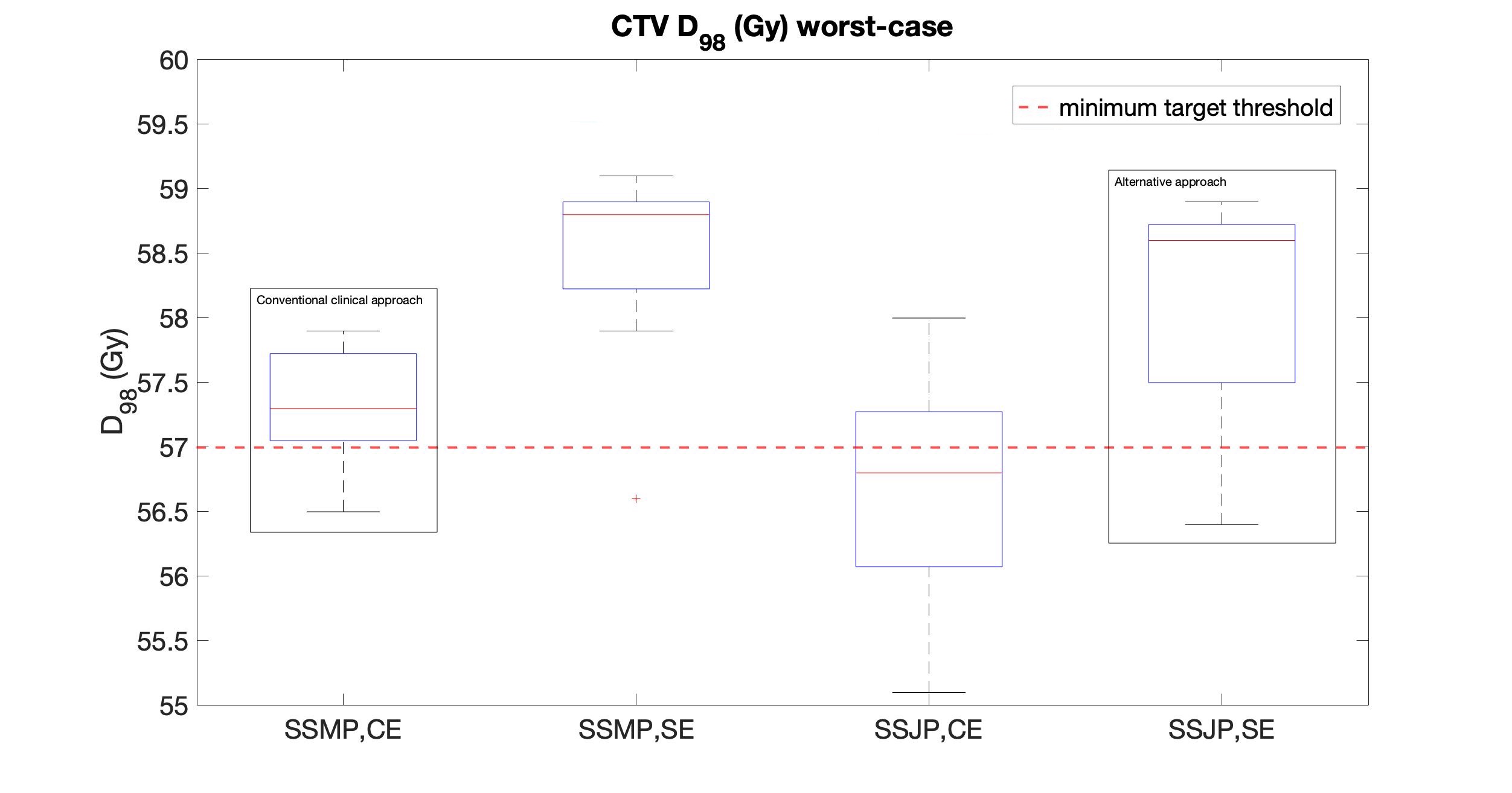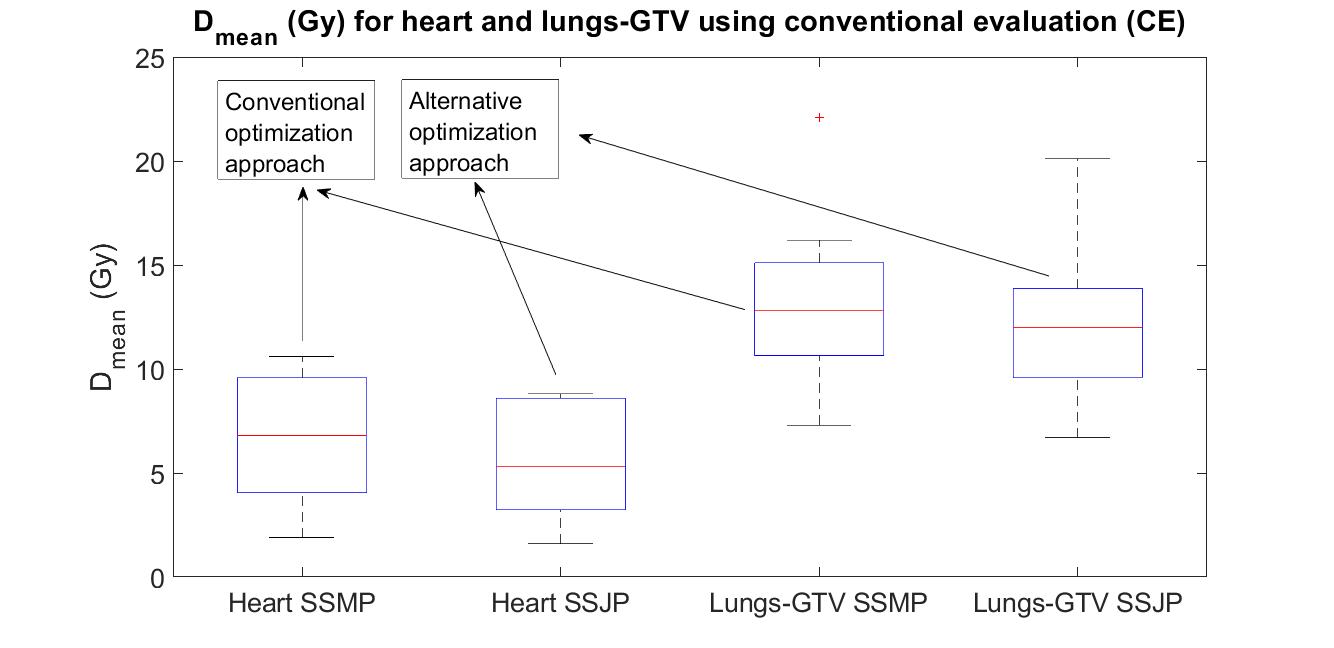Healthy tissue sparing in proton therapy of lung tumors using statistically sound robust planning
PO-1506
Abstract
Healthy tissue sparing in proton therapy of lung tumors using statistically sound robust planning
Authors: Vlad Badiu1, Kevin Souris2, Gregory Buti2, Elena Borderías Villarroel2, Maarten Lambrecht3, Edmond Sterpin1,2
1KU Leuven, Department of Oncology, Laboratory of Experimental Radiotherapy, Leuven, Belgium; 2Université catholique de Louvain, Institut de Recherche Expérimentale et Clinique, Center of Molecular Imaging, Radiotherapy and Oncology (MIRO), Brussels, Belgium; 3Leuven Kanker Instituut, Universitair Ziekenhuis (UZ) Gasthuisberg, Department of Radiotherapy-Oncology, Leuven, Belgium
Show Affiliations
Hide Affiliations
Purpose or Objective
Robust planning is essential in proton therapy for
ensuring adequate treatment delivery in the presence of uncertainties. For both
robust optimization and evaluation, commonly-used techniques can be overly
conservative by generating error scenarios from combinations of only maximum
error values of each uncertainty source and they lack in providing
quantified confidence levels. In this study, we explore whether a clinical benefit can be expected using scenario
selection tools with improved statistical foundations, both at the level of
robust optimization and evaluation.
Material and Methods
Thirteen lung cancer patients were planned. Two robust
optimization methods were used: scenario selection from marginal probabilities
(SSMP) based on using maximum setup and range error values and scenario
selection from joint probabilities (SSJP) that selects errors on a predefined
90% hypersurface. Two robust evaluation methods were used: conventional
evaluation (CE) based on generating error scenarios from combinations of
maximum errors of each uncertainty source and statistical evaluation (SE) via
the Monte Carlo dose engine MCsquare which considers scenario probabilities. During evaluation we report for the target
coverage the D98 (Gy) nominal and worst-case values as well as Dmean
(Gy) and V30 (%) for heart and lungs-GTV and D2 (Gy) for
spinal cord and esophagus.
Results
Plans optimized using SSJP had, on average, 0.5 Gy
lower dose in CTV D98(worst-case) than SSMP-optimized plans. This was expected as the SSJP tool aims at securing robustness at a predefined
90% confidence level with the aim of achieving a level of target robustness
situated at the limit of clinical acceptability (i.e., adequate coverage for at
least 90% of patients). When evaluated using CE only
76.9% of SSMP patients and 46.2% of SSJP patients passed our clinical threshold.
Evaluating with SE, 92.3% of
patients passed our clinical threshold in both optimization methods highlighting
the impact of evaluating in a statistically consistent manner. Average gains in OAR sparing were recorded
when transitioning from SSMP to SSJP in all metrics: esophagus (0.6 Gy D2(nominal), 0.9 Gy D2(worst-case)),
spinal cord (3.9 Gy D2(nominal), 4.1 Gy D2(worst-case))
heart (1.1 Gy Dmean, 1.9% V30),
lungs-GTV (1.0 Gy Dmean , 1.9% V30). The reduction of the target margin to the
bare minimum is the main drive that enables substantial and consistent OAR
sparing.


Conclusion
Establishing a proper robust optimization and
evaluation workflow is essential to realize the potential of proton therapy. Optimization using SSJP yielded significant OAR
sparing in all recorded metrics with a target robustness within our clinical
objectives, provided that a more statistically sound robustness evaluation
method was used. This highlights the importance of using both advanced optimization and
evaluation tools when we aim at ensuring a quantified level of robustness.